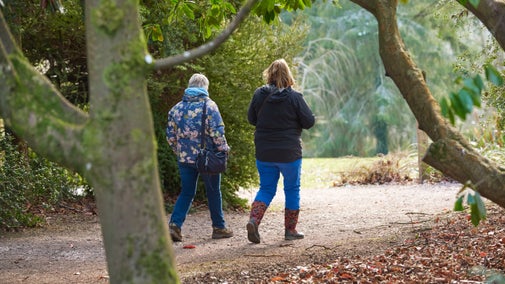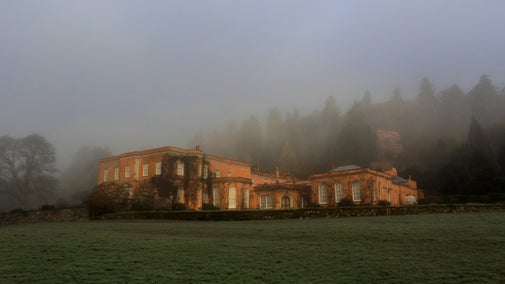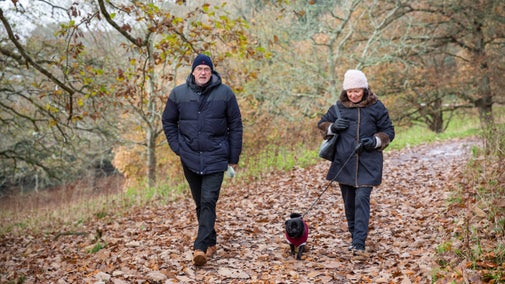Killerton tree spotting walk
Devon
Curious about trees? Want to challenge the family to tree identification? Pull on some sturdy shoes and discover Killerton's tree spotting walk and meet its famous collection of ancient, rare and giant trees.
Near to
KillertonStart point
Visitor reception, stable block. Grid ref: SS 97622 00091Trail information
More near here
Killerton autumn garden stroll
Take in the full array of autumnal colours on this gentle meander around the main paths of the garden at Killerton.

Ancient trees walk at Killerton
This circular walk highlights some of the many ancient trees that you can see in the garden and park at Killerton, including sweet chestnuts that were planted some 250 years ago.

Danes Wood walk
An enchanting walk from the Killerton estate to nearby Danes Wood, a haven for wildlife.

Plains walk at Killerton
This dog-friendly walk takes you through one of Killerton's hidden secrets, an enclosed, far-reaching expanse of grassland.

Get in touch
Our partners

We’ve partnered with Cotswold Outdoor to help everyone make the most of their time outdoors in the places we care for.
You might also be interested in
Walking
Explore some of the finest landscapes in our care on coastal paths, accessible trails, woodland walks and everything in between. Find the best places to walk near you.

Walking in Devon
From rugged coastline with captivating views to gentle woodland strolls, these are some of the best walks in Devon this winter.

Killerton
A family home and a great estate. Glorious landscape garden surrounded by parkland with fine 18th-century house.

Things to do on the estate at Killerton
Explore the forests, orchards and parkland on the vast estate at Killerton and discover the creatures that live here, from Highland cows and dormice to bats and butterflies.

Visiting Killerton with your dog
Killerton is a two pawprint rated place. With miles of paths and tracks to explore, dogs love walkies at Killerton. Find out the best dog-friendly walking routes and where they can run off the lead.

Follow the Countryside Code
Help to look after National Trust places by observing a few simple guidelines during your visit and following the Countryside Code.

Staying safe at National Trust places
The special places in National Trust care sometimes come with a few risks for visitors, be it coastline or countryside. Find out how to keep safe throughout your visits.

Cotswold Outdoor: our exclusive walking partner
Learn about the National Trust’s ongoing partnership with Cotswold Outdoor. Find out how they help us care for precious places and the exclusive discount available for National Trust supporters.


